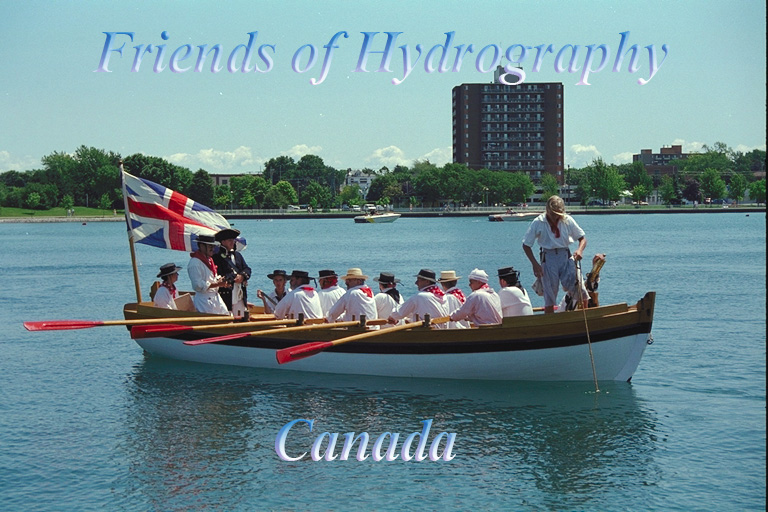Hudson Bay Route
Northern Charting - The Hudson Bay Route
Staff Commander J. G. Boulton, R.N.
When the first Canadian expedition to Hudson Bay was planned in 1884, a Committee of the House of Commons sought the advice and recommendations of Captain J. G. Boulton, then an Acting Staff Commander, Royal Navy. He had done some preliminary exploration, or reconnassaince on the Labrador and in Ungava Bay. As an exploratory survey of the route, he recommended the following:
"The Dominion Government hire a steamer - one of the St. John's Newfoundland steamers, always at hand. Her captain should be one of the St. John's sealing captains, well experienced in ice navigation. He should have the selection of his crew. For a pilot, the Government could apply to the Hudson's Bay Company for a man who had been in their service. Perhaps one of the mates of the two vessels, "Ocean Nymph" and "Prince of Wales", which go to York Factory now. The British Admiralty should be applied to for a surveyor. There should be six or seven small parties taken out in the vessel, to be landed at points in the Straits, left all winter and picked up in the spring. These parties should consist of a Canadian gentleman in charge, with some slight knowledge of how to make a local survey and the use of instruments, with a couple of men, one of whom should be an English-speaking Eskimo, who, I think, could be picked up at York Factory."
(Boulton was not acquainted with Hudson Bay itself. On the west coast Eskimos were not found south of Churchill).
"That would make about twenty in all the parties. The Admiralty surveyor would have charge of the Expedition, select the localities for the landing parties, direct the course of the vessel through the Strait, subject to the information of the sailing master in all matters relating to ice, because the gentleman from the Admiralty might not be acquainted with the ice, and, if a surveyor, the chances are he is not. It would be necessary to have a vessel large enough to carry coal to take her to York Factory and back.
"The vessel should leave St. John's on the 5th of July, proceed to York Factory, the surveyor making a running survey and taking a line of soundings across the Bay. The vessel might visit Churchill, which probably would be a most suitable place for a terminal - the west harbour of Churchill - as well as York Factory.
"The vessel should then return to the Strait. (Parties) should be landed, with material for building a hut, a year's provisions, a small boat, and a few instruments.
"With reference to the return of the vessel to St. John's , running surveys should be made according as the amount of open water and the quantity of coal remaining would permit, and continued until the vessel finally returns to St. John's , leaving the parties in the Strait. The following summer a similar vessel should be hired again and engaged to pick up the parties landed."
The government adopted Boulton's scheme, almost in its entire detail. The Job Brothers sealing steamer "Neptune" was chartered for three months and the expedition of 1885-86 was carried out in charge of Lieut. R. Gordon, R.N., of Toronto . (Lieut. Andrew R. Gordon)
Six parties, were landed, between the Labrador and Digges Islands . Boulton explained that, "The principal object of the landed parties is that, from their commanding positions, assisted by a good telescope, the daily condition of the ice, as far as they could see, particularly at the close and opening of navigation, the character of the ice, and the drift and set of the ice, and so on, could be ascertained."
This Part of Boulton's plan did. not work out. Because the landings were made where there were anchorages in bays or inlets, the visions of observers were limited. It was reported, by Charles R. Tuttle, one of the observers, who wrote an exhaustive report of the expeditions, that, "The only successful method of proving the length of time Hudson Straits are navigable is by navigating those waters."
It is notable that the Canadian Hydrographic Service's expeditions and exploratory surveys of later years, 1910 to 1914, and others after the war, were along the lines of Boulton's recommendations and Gordon's " Neptune " expedition. Though the first one differed in that an icebreaker instead of a chartered sealing steamer was chosen, and only two parties landed, at Churchill and Port Nelson, the expedition was given to an ex-Royal Navy officer (Capt. I. B. Miles) and a St. John's experienced ice navigator (Capt. Sam Bartlett) was engaged; running surveys were made and anchorages examined. In later years, a shore party was landed, with the launch "Henry Hudson", and shifted about from one place to another in the Strait.
(Ref: See "OUR NORTH LAND", by Charles R. Tuttle, 1885, copy in Northern Affairs Library).

